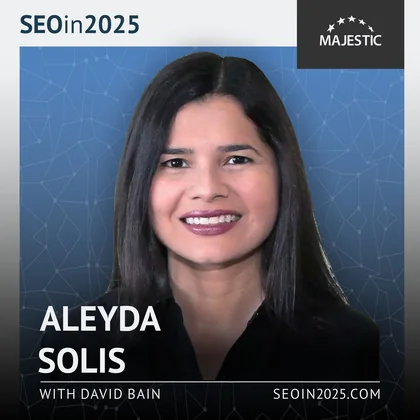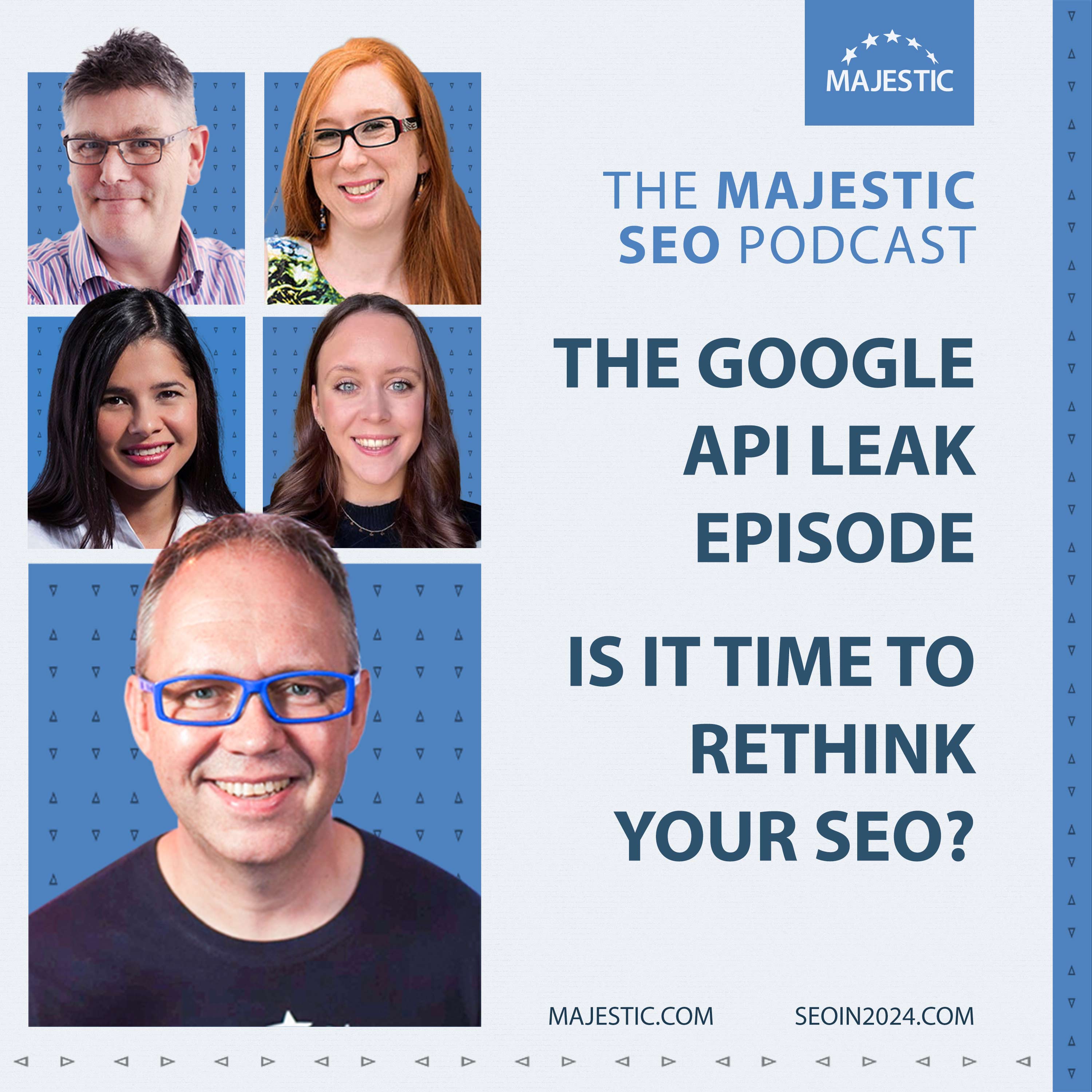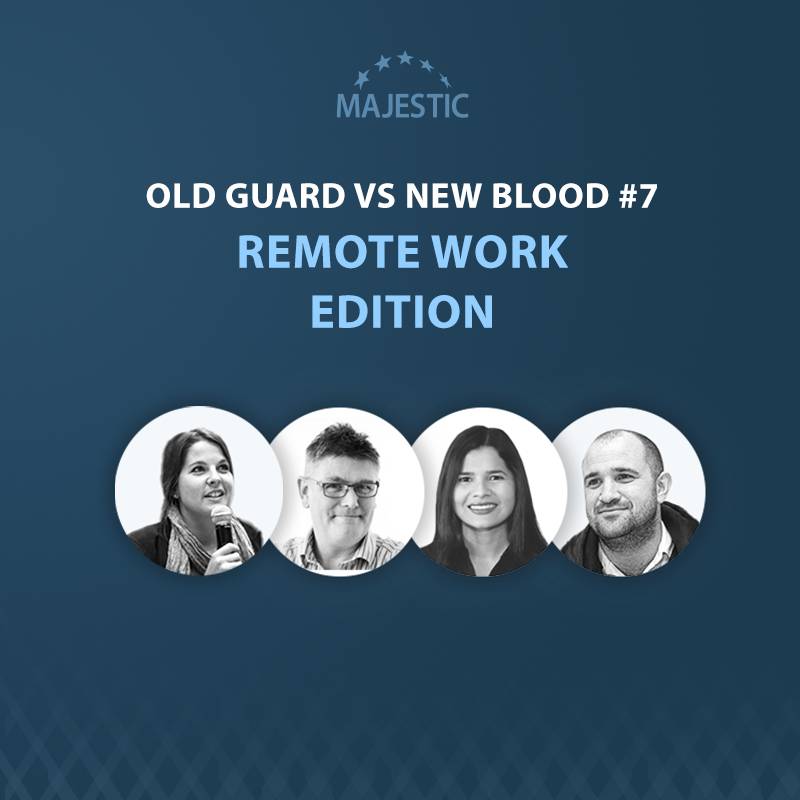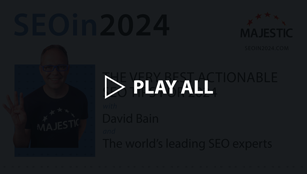-
Site Explorer
- Majestic
- Summary
- Ref Domains
- Backlinks
 New
New Lost
Lost- Context
- Anchor Text
- Pages
- Topics
- Link Graph
- Related Sites
- Advanced Tools
- Author ExplorerBeta
- Summary
- Similar Profiles
- Profile Backlinks
- Attributions
- Compare
-
Link Tools
- My Majestic
- Recent Activity
- Reports
- Campaigns
- Verified Domains
- OpenApps
- API Keys
- Keywords
- Keyword Generator
- Keyword Checker
- Search Explorer
- Link Tools
- Bulk Backlinks
- Neighbourhood Checker
- Submit URLs
- Experimental
- Index Merger
- Link Profile Fight
- Mutual Links
- Solo Links
- PDF Report
- Typo Domain
- Free SEO Tools
- Support
Focus on the long tail
Aleyda Solis
Getting a little more specific, Aleyda Solis from Orainti encourages you to turn your attention towards the long tail keywords to keep up with changing user behaviour.

Focus on the long tail
Aleyda says: “Target and focus more on answering the long tail queries of your users.
We are going to see a much bigger and more important impact from those as a consequence of the AI overviews and personalised AI results that we expect to have in the not-too-distant future.
Google is incentivising users to refine their search and focus more on the specifics, even if that’s only with informational AI overviews where we see Google feature additional, more specific queries at the end.
Another format that they tested, which hasn’t been officially launched yet, was for commercially focused products. The AI overviews had a product pack format, which referred users who were searching for mid-funnel queries to PDPs. That brings more traffic and visibility to more detailed pages – or pages that target the long tail type of queries.”
How do you know what long tail keywords to target?
“Look at the SERPs. This is advisable for many reasons but, in this case, you can identify which related questions Google directly suggests within the AI overview. Then, the People Also Ask queries are topics that the top-ranked pages, and the pages cited within the AI overview, are addressing that you are not.
Look for these additional inputs that are already telling you these relevant, meaningful, reasonable questions that are already being referred to by Google and given visibility in the search results, one way or another. It makes sense for you to try to target them.
Of course, you also need to add an additional layer of validation and whether this makes sense to you from a business standpoint, by the nature of your product or your service. Do these queries connect with what you provide and how can you personalise them to have a positive impact on your brand and your overall conversion process or customer journey?”
Should SEOs be afraid of their content being discovered in the AI snapshot and not resulting in a direct website visit?
“We might try to avoid them right now, and not focus on them, because they tend to have a lower click-through rate or give us less visibility.
On one hand, I believe this gap is closing. In the latest results, we’ve seen that the top-cited sources in the AI snapshots are provided much more visibility with the new sidebar. The look and feel, and the format, give much more visibility and will incentivise a higher click-through rate for the top-cited sources.
Sadly, right now, those haven’t been consistently released for a high enough number of queries to be able to assess the before and after. This is something that I’m looking to validate.
On the other hand, there’s currently a very high overlap between the top-cited sources in the AI snapshots and the traditional top-ranked results, and I expect that will continue to be the case. This means that, if you’re already doing a great job of ranking well organically, you’re very likely going to be showcased and given visibility in the AI snapshot. It should be very low-hanging fruit for you to continue addressing these queries anyway.
A lack of citation might harm the wrong business model. However, there will be many queries where, because of the nature of your business and how you want to establish yourself as a brand – even if the click-through rate might not be huge and direct conversions might not be very high – it makes sense for you to try to get there, if it reflects well on your business.
For example, a lot of top-of-funnel terms or topics, where you want to establish yourself as the authority. What is important is being very strategic about it. Do you generate yet another pillar piece or comprehensive how-to like everyone else is doing? You need to establish yourself with the sort of content that showcases what you do and your unique selling proposition, but also increases your visibility share, your share of voice, and establishes your brand within the field.
Of course, this is easier said than done. If you’re just launching your brand, it might not be worth doing at this point. However, if you have been developing your ongoing content strategy for a while, and you’re already working on targeting those, it makes sense to continue – but in a more strategic way that better endorses those long tail queries.
Also, you can connect those long tail queries with more commercial queries that can give you more conversions or return from a revenue standpoint.”
Could it soon be legally mandatory for AI-powered search engines to do a better job of citing sources?
“We’re still going through a phase where there are no rules. However, we have already seen how LLMs learn from content that they haven’t asked permission to use, and the back and forth with big publications and publishers.
There should be rules. I expect that, in a few years, there will be certain reasonable standards that can provide a good ground of operations for anybody who creates original content for the web to be cited or compensated in some way, even if it is not from a monetisation standpoint.
When Bing first integrated LLM results, they mentioned that they were working with major publications to see how they could split the revenue of the ads that would be displayed with those results. Of course, I don’t expect this would be viable for every single player out there.
We also have AdSense, and ads that play on your website are part of the Google business model. It’s beneficial for Google to provide traffic to players, or try to split traffic in some way, when they are using that player’s content. I do expect this to evolve in a way that is reasonable and beneficial for all parties.
Interestingly enough, the AI overviews were rolled back after the terrible initial results. It was not only because of quality, but also because of the impact they had for certain very commercial queries and how they were not highlighting the sources. Now that they have been released for users who are not logged in, we can see how it has changed.
It’s very obvious, even if they haven’t highlighted it very much. The new way that you can see sources more prominently is like night and day, it has changed so much for the better. I expect this will continue to shift in a positive direction. Otherwise, what is the incentive for even minor publications to keep the web diverse and rich, and to continue sharing know-how?”
By not clearly citing sources, are they perhaps trying to avoid revealing which sites are being used for training data?
“Potentially, yes. I also think they are considering the type of content, because of quality and originality factors. Then, there’s the potential backlash from regulatory issues, or other issues that they are expecting will arise in the future. They are 100% covering their backs.”
When looking at commercial and informational keywords, how do you know which will bring longer-term value?
“First, it needs to tie in with your goals and your overall SEO strategy: which product lines you want to push, the type of business that you have, how you want to position yourself, and how much you want to grow in terms of direct revenue. Also, what other metrics and goals do you want to achieve?
Do you want to bring more sign-ups to your newsletter, upsell, cross-sell – or do you want to provide better customer support? That is a valid goal and metric for many established enterprise-level brands that want to minimise the number of direct contacts to their support system by providing a really good web experience for existing customers in the support section.
Understand what your goal is and then align all of your efforts to connect whatever you do with that goal. A balanced plate for most established brands is, on one hand, to have commercial queries that are more directly connected to revenue, which could be the lower-hanging fruit you are almost ranking for already. Then, on the other hand, you have the longer-term goal of gaining the visibility that you deserve in your niche.
That’s a particularly important balance for e-commerce. E-commerce websites tend to focus entirely on commercial and transactional queries, without targeting informational queries. That’s a big mistake. In fact, when the AI overviews were highlighting these product packs, the intro was being sourced from a lot of informational guides, reviews, and affiliates.
They are not the players who tend to know all of the ins and outs of the products best because they are not the actual sellers. So many retailers are losing visibility to third-party publishers simply because they are not putting in the minimum effort on that front.
You should be thinking about how to differentiate yourself and establish yourself as a brand. How can you leverage all of these insights that you already have, from having sold hundreds of thousands of these products? How do you leverage all of these reviews, support tickets, and FAQs that you have already addressed? Create a presence and establish yourself as the best player at providing support for extreme sports goods, for example.
That’s how a smaller player can compete with a huge retail brand. Use comprehensive information to show that you have the know-how, you have the expertise, you have provided amazing support, and this is how you can help your audience make the best decision in this field. You already do this so often on your website, you are just not making that information discoverable to search engines.
Potentially, it’s not even living on the website yet because it’s what you do in your physical store. It’s what you have already been doing with real salespeople. It’s about translating all of that customer experience to the web in a way that’s well-formatted and organised, with proper taxonomy, to integrate with the web architecture and your more commercially focused pages, so they can refer to and support them, and they can attract a lot of authority and popularity.
These are the types of content that users love to spontaneously share and link to. Eventually, this is what will get you visibility for all of those query variations regarding the more informational aspects of your industry or sector.
That’s the type of mindset I try to incentivise, even with the most commercially driven clients that I work with. It will pay off eventually, as long as the content is meaningful and actionable, it showcases your expertise and your unique selling proposition, and it connects with the products that you sell.”
How can you measure the value of your visibility with so many different personalised SERPs out there?
“This will only get more complex with the AI-personalised SERPs that Google already announced for certain types of queries. They shared a video a few months ago showing how SERPs for restaurant and local services advice will be almost completely personalised based on the location, characteristics, and history of the searcher.
Firstly, you need to track how you get those visits. What are all of the query permutations? Google Search Console can provide a little bit of that, but it doesn’t tell you the whole story. Do benchmarks to see all of the different formats that are getting visibility in SERPs.
Also, do a bit of additional keyword research to see what search results and query behaviours are present on those additional platforms like YouTube and TikTok. There is a wealth of information and queries there that have not yet been addressed by content that’s properly formatted to rank well. Additionally, there might be a lot of visibility being referred to these external platforms that you’re missing because you are not even trying to assess them.
On the other hand, more and more rank trackers will focus not only on the position but also on visibility share – at the query level and at the topic level. In Advanced Web Ranking, and many others, you can create groups of queries and see what types of pages are visible, and from which websites.
For example, you might find that Reddit pages have an increasing visibility share for a group of sneaker queries that you are still targeting with your PLPs or PDPs. The players that have started to gain visibility share in the last year (even outgrowing many other retailers) are informational content like Reddit, Quora, or YouTube. That is telling you the type of content that Google is trying to give more visibility to. How can we integrate those to get that visibility ourselves?
Go to those platforms that are getting this visibility. What is the type of content that is produced on Reddit, what gets the most traffic and visibility, and what can you learn from those to create your own version? Then, you eventually want to do your own tests and assessment.
Of course, you can’t suddenly create a lot of the content just because other players are doing it. The first filter is what is more aligned with your existing content strategy, your goals, and the products that you want to push. If you still have a large number of potential topics to address, with very low search volume (because it is all personalised, so tools won’t be able to track it and tell you the specific numbers as easily), start doing pilot projects and tests.
See what brings more visibility, what resonates more, and the type of engagement your users have with it – not only on the SERPs, but also when you push and promote your content within your own communities. Put it out on social and the other types of campaigns that you should have. Diversifying the channels is key right now.
That’s how I would assess this. It’s not as straightforward as it was before, but going through all of these steps will allow you to identify the trends and patterns, the type of content you are missing out on that is getting more visibility, and how you can better connect with the ones that will bring more value for your brand in terms of what actually matters to you.
The ones that tend to bring more views might not necessarily be those that will engage the most or end up converting more often. Learning and going deeper into all of this – impressions vs clicks vs click-through rate vs conversion vs final conversion, etc. – will be increasingly important. Then, balancing that with what makes sense for your goals will be key.”
If an SEO is struggling for time, what should they stop doing right now so they can spend more time doing what you suggest in 2025?
“Where are your conversions coming from?
Go and take a look at where your revenue is coming from right now. Which pages are bringing conversions and what can you do to make those pages run better? How can you complement them with additional content that you don’t already have? Can you create new pages to rank for tangential or related topics that are very similar and also good opportunities?
Go for the low-hanging fruit.”
Aleyda Solis is SEO Consultant and Founder at Orainti, and you can find her over at Orainti.com.
Also with Aleyda Solis

Majestic SEO Podcast
|
Joining David Bain to discuss whether or not the Google API leak should change the way you do SEO is Aleyda Solis, Joy Hawkins, Liv Day and Dixon Jones.
|

SEO in 2024
|
Like Lazarina, Aleyda Solis from Orainti brings you an actionable way to take some of the pressure off the tasks that are cluttering up your schedule, without compromising on quality. |

SEO in 2023
|
Aleyda Solis gives SEOs in 2023 tips for creating a quality assurance framework that will prevent you from becoming part of your own SEO horror stories - including education, validation, and monitoring. |

SEO in 2022
|
Aleyda shares that SEO testing has the potential to take your SEO efforts to a completely different level. |

Majestic SEO Podcast
|
As we all get into the new reality, Digital Marketing is better placed than most to work remotely. But how do you manage teams remotely or how do you want to be managed remotely?
|
Choose Your Own Learning Style
 Video
Video
If you like to get up-close with your favourite SEO experts, these one-to-one interviews might just be for you.
Watch all of our episodes, FREE, on our dedicated SEO in 2025 playlist.
 Podcast
Podcast
Maybe you are more of a listener than a watcher, or prefer to learn while you commute.
SEO in 2025 is available now via all the usual podcast platforms
Don't miss out
Opt-in to receive email updates.
It's the fastest way to find out more about SEO in 2025.
Could we improve this page for you? Please tell us




